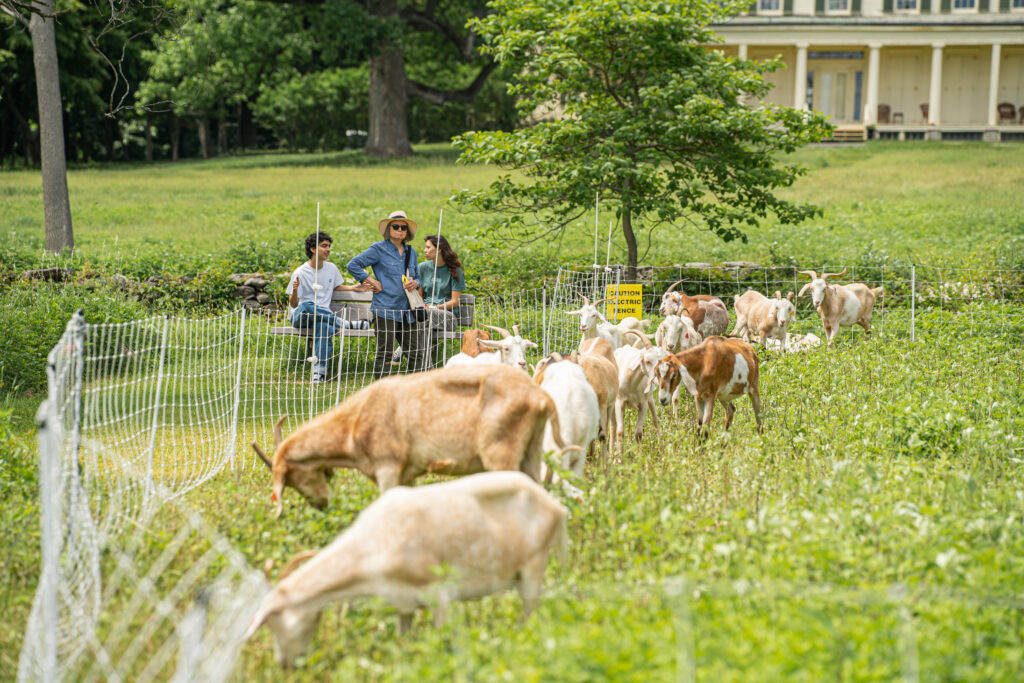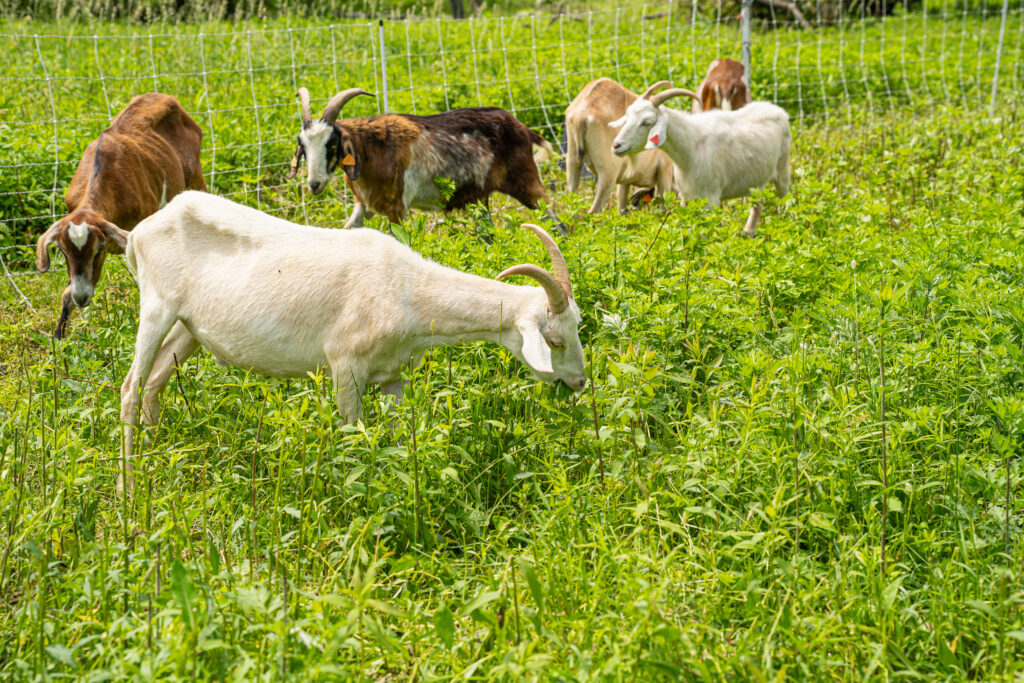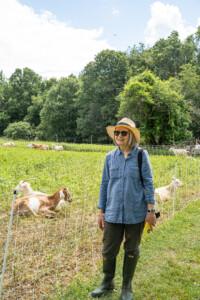Goats Battle Invasive Mugwort @ Marshlands Conservancy

Thirty goats are hard at work battling the invasive mugwort plant, which has taken over the 23 acre meadow at the Marshlands Conservancy in Rye. The goats started their work on Memorial Day and will be actively eating mugwort for about twelve hours each day until Wednesday, June 5, when they head to The Harvey School in Katonah to help battle Porcelain berry, another stubborn invasive.
“We bring these goats for targeted grazing management of landscapes that are overrun with weeds and vines and all these plants that would otherwise be eradicated with herbicides or long tedious human chores,” said Jenn Balch, the owner of Fat & Sassy Goats. Balch used to work on Wall Street before taking a career turn into ecological goat grazing. Her company’s goats are on the job. “To me looking at animals for their service value, as opposed to their product value, was really just brilliant.”
It is believed this is the first time goat grazing has been used in a Westchester County Park as a land management tool. Marshlands Conservancy Curator Michael Gambino told MyRye.com the goats are part of a controlled experiment to see if they are impactful at invasive control (which in turn allows room for native plants to return). The animals are grazing on a one acre part of the upper meadow and will return the next two years to keep pressure on the same area of mugwort.

The park currently mows the meadow each spring to prevent a succession into a forested area and to preserve the diversity the meadow provides the 130 acre park. But invasives continue to be an issue – mugwork, multiflora rose and others. Beyond the goats, another management technique that could be used in the future is a prescribed burn. This is a common technique of land managers and has been used locally on Long Island. Like the goat approach, it would require various approvals.
Goat owner Balch said the goats are not intended to be a forever tool. The three year mark seems to be the soft spot. “By around year three, the proportion of beneficial plants we’ve shifted [to has increased] in such a way that we’re back to a happy long term, easy to manage, ecologically sound meadow.”
Approval for the goat project went all the way up to the Director of Conservation for Westchester County Parks Jason Klien and Commissioner Kathy O’Connor. Klein is also the Mayor of Rye Brook and sits on the Rye Town Park Commission. Even goats need to be properly insured and have various paperwork completed before going to work.

The goat grazing invasive plant management experiment is being funded by the Friends of Rye Marshlands group. The current round required about $10,000 of funding, and the group is looking for additional donations and grant funding, said Claire Francis, president of the Friends of Marshlands.
“It’s also a good way of engaging the public because everybody loves the goats, and they’re quite fascinated by them,” said Francis. “And they do have a calming effect once you watch them in the meadow chewing around the place. So it gives us an opportunity to actually talk to people who visit about the project and about other projects at marshlands and the problem with invasive plants and what we need to do about it.”
The thirty goats are chowing down and fully viewable in the upper meadow at the Marshlands through Wednesday, June 5th.
And now, goat video:






